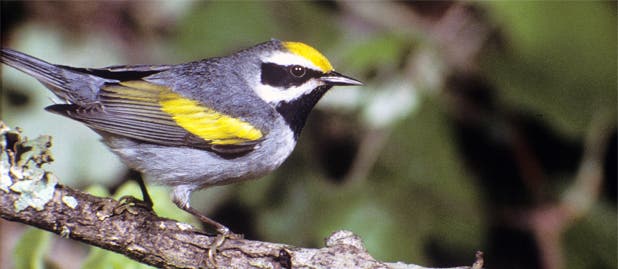Some animals have extraordinary sensorial abilities; there have been scientific works documenting dogs which react to an earthquake 5 minutes before the waves reached the surface, but this is perhaps even more spectacular – some birds can sense an earthquake from 900 km away (560 miles).

A tornado in Brisco County, Texas. The birds didn’t appear to have used changes in pressure, wind speed or precipitation to warn them of the approaching storm. Photograph: Reed Timmer/Jim Reed Photography/Corbis
It seems that have avoided a devastating storm by fleeing their US breeding grounds after detecting infrasound waves from 900 km away. Researchers observed this behavior as they were studying the birds’ migration patterns. They believe it is the first documented case of birds detecting weather events based on infrared – let alone from such a big distance.
“We looked at barometric pressure, wind speeds on the ground and at low elevations, and the precipitation, but none of these things that typically trigger birds to move had changed,” said David Andersen at the University of Minnesota, explaining why they think the birds detected infrared. “What we’re left with is something that allows them to detect a storm from a long distance, and the one thing that seems to be the most obvious is infrasound from tornadoes, which travels through the ground.”
Golden-winged warblers breed in southeastern and south-central Canada and the Appalachian Mountains northeastern to north-central USA. The majority (~70%) of the global population breeds in Wisconsin, Minnesota, and Manitoba. The birds had just returned to their breeding grounds in the mountains of Tennessee in 2013 when a massive storm was edging closer. Although the birds had just completed a migration of more than 2,500km, they still had the energy to avoid the storm.
The storm was still 900 km away when the birds, apparently out of nowhere, decided to flee 1,500 km to Cuba, only to return after the storm has passed.
“In five to six days, they all made this big move around the storm,” Andersen said. “They all went south east in front of the storm, and then let it go by, or moved behind it. It was individual behaviour, they were several hundred kilometres away from each other most of the time.” Details are reported in the journal Current Biology.
Scientists are not really sure that the birds’ brains can pick up infrared but previous work in pigeons has suggested that birds might use infrasound to help them navigate. Infrasound waves range from about 0.5Hz to 18Hz, way below the audible range of humans. This is good news for the birds, and suggests that they may actually be more adaptable than previously though.
“With climate change increasing the frequency and severity of storms, this suggests that birds may have some ability to cope that we hadn’t previously realised. These birds seemed to be capable of making really dramatic movements at short notice, even just after returning on their northwards migration,” he said.










